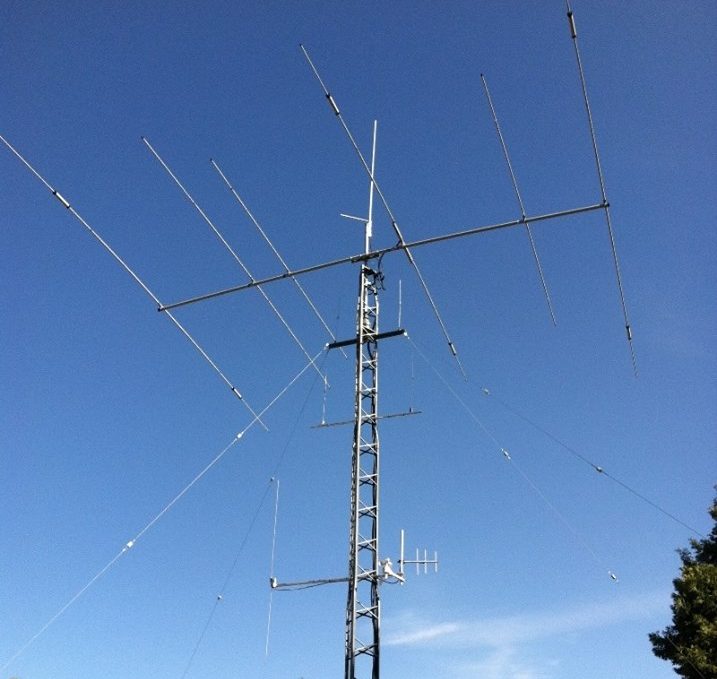A ‘problem’ appears. Could be a lamp doesn’t light. Car doesn’t start. Could be a ‘device’ doesn’t power up. Could be your receiver presents some noise/doesn’t hear some signal or all you hear is ‘noise.’ Your transmitter doesn’t “get out.” “Whenever I transmit with ‘X’, ‘Y’ happens… ‘X’ must be bad or ‘Y’ must be bad.”
“Pretty sure THE problem is…” Brace for impact – this is *serious* – “I saw on the Interwebs…”
Then of course – “the Interwebs…” – “choke it”, “use XYZ coax”, “trash that antenna and do this antenna… it’s *great…”, “wall-warts…”, “install *some* ‘balun*…”, “your tuner is wrong…”
Dozens of years of “being new…”. learning self-awareness and customer service ‘suggest’ … “whoa, wait… let’s walk this back…”
The VERY FIRST step to troubleshooting anything is separating symptom from assumed problem.
The VERY LAST step is asserting a (generic, often WRONG) solution to anything and everything.
Somewhere between Step 2 and Step 99.5 is a cause, effect and maybe, probably, an *actual* cause and a very specific solution vs. a mythical cures-all “band-aid.”
Indeed, problem definition, refinement, process of elimination, measuring the effective actual solution once, and only IF the symptom is resolved to a specific ‘problem’ MIGHT some answer be appropriate and effective.
Customer Service 101: LISTEN to the initial problem statement.
Customer Service 101b: QUALIFY the problem statement.
Customer Service 101c: FURTHER qualify the problem statement…
From this, the problem/symptom determination and possible/*MAYBE* solution process might lead to any easy answer, or more complex process.
It is literally impossible, inadequate, and ‘dishonest’ to mandate Solution A when Problem X has not yet been resolved.
STOP !!!!!!!!!!!!!!!!!!!!!!!!!!!!!!!!!!!!!!!!!
Unless stated-problem X was well-defined and provided all the essential relevant information you need to know – chances are that your response ‘Y’ is *WRONG* – 133% WRONG. Being eager to “provide a non-solution” does not get anyone ‘points.’
Troubleshooting is as much or more actually *listening* as it is proper solution-path qualifying investigation. More often than not the most significant clues and direction are NOT revealed nor apparent without 2-3 exchanges of actual specific *investigation*.
That period is the actual opportunity for essential *learning moments* – for you and the problem-victim.
In the (‘simple’?) case of “light does not come on…” what are all of the essentials for “light on” to happen? Follow the electrons.
In a case of “I cannot hear anyone on 40 meters…” the options become more and more complex. Drill down…
In a case of “I can hear XXX on 40 meters but I cannot ‘work them…” – the options become MUCH more complex.
‘Snarking’ a response such as “just apply ferrites…” means NOTHING, probably LESS than NOTHING, without any/all of the appropriate qualifying steps that a) eliminate the CORE actual problem, and b) are KNOWN to be the only solution to make-up-for the poor excuse for an interference generating product problem in the first place.
‘Snarking’ “go build/buy ‘X’ antenna, it works ‘great'” – without ACTUAL knowledge-enhancing qualifying evidence is NOT helping/advancing community contribution.
Then too, if you get “so far” into the problem-definition/qualification path and hit a road-block – stop, admit so, defer to/request others qualify… and maybe sit-back, listen, learn.
There are a *LOT* of ways to pursue the problem-qualification path before one ever, ever tosses out some ‘magic’ ‘solution.’ Qualification and refinement of the troubleshooting process *IS* a challenge for most/all of us… but the person with the problem/symptom wants/expects expertise.
I am very, Very, VERY aware of this – from various communications systems challenges to basic mechanics of medical sample handling to miniscule Coloumbes of electrical charge measurement to obscure Windows/Apple-xxx/Linux-XYZ error/problem presentation.
CHILL! Step back. QUALIFY the issue… 2, 3, 4 levels deep… before ever, Ever, EVER depositing a ‘solution’ which could likely be light-years away from the user-experience, awareness, capabilities.
We as Elmers/’experts’ set ourselves up to be ‘better’ experts than those who are asking for our help. Be better. Be Better. Be BETTER!
It is OK, better than OK to NOT KNOW -and- defer to, consult others who might. NONE of this (technology) is personal. It’s ‘just’ technology. Applicable technology has been known and evolved over many decades.
NO ONE expects *you* to know everything, and our audience will RESPECT and REGARD us more if we freely admit we do NOT know, but that we WILL ALL endeavor to FIND OUT!
Ham radio ‘technology’ has always been and will always be, or BENEFIT from, respectful, honest awareness and acknowledgement of the very real actual science and “Mother Nature” aspects of how RF works.
There are no “great antennas”. No “great radios.” The only ‘great’ is that we appreciate, implement, and work with the humble wires and atmospheric conditions we are provided.
It just doesn’t seem that the likes of ham radio was, is, or needs to be ‘personal’, ‘identity’ or agenda-based. BIGGER antennas are NOT a measure of the operator, but the design and purpose intent.
Thousands of lives have benefited from radios with 4-8″ antennas… your 40-80 FOOT antenna may or may NOT be right for the task/desire/goal at hand.
Do what you KNOW. If you do not know – ASK. Polite, objectively, technically-correct are here for ALL.
Best 73!!!
